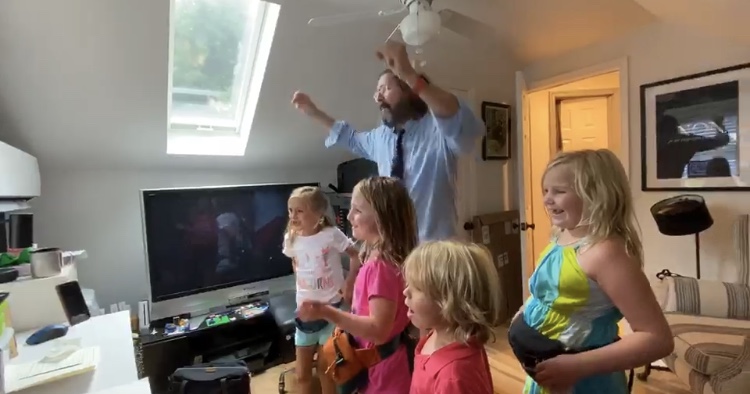An alarm rings halfway into English and Theory of Knowledge teacher Hendrick Booz’s classes, signalling a quick break not only for his students, but for Booz himself.
Initially, the breaks included scavenger hunts among other activities, with the purpose of allowing students to get out of their chairs. But, upon watching his kindergarten child’s teacher telling her class to start dancing to “Pop See Ko” by Koo Koo Kangaroo, Booz decided to try the idea in his own classes.
“I have a hard time concentrating for 80 minutes online myself,” Booz said. “I prefer dancing as kids have the chance to move […] They get to offer their choice of music and they get to see their teachers engage in a little silliness.”
Senior Michaela Wacht said while she was surprised when Booz first got up from his chair and danced to “Pop See Ko”, she did enjoy the innovative approach to a pause from content.
“After the initial shock wore off, I thought it was really entertaining and a great idea for a break in class,” Wacht said. “None of my other teachers have implemented a dance break yet, but some include stretch breaks for about three minutes. It’s nice to have a […] break in the middle of class to just let loose and recharge.”
During synchronous classes, many teachers stop content to give students time to stretch, grab a drink or walk around. Wacht said these breaks in classes have been essential in avoiding fatigue.
“Staring at a computer screen […] and doing nothing but work takes a lot out of me,” Wacht said. “It’s easier to stay engaged when there are breaks in between topics. Having just a few minutes to get away from the screen and shut my brain off really helps to keep me focused later in class.”
Senior Emma Cottle said non-curricular activities like breaks force students to not think about school for a few minutes, which is important when circumstances blur lines between school and home life.
“In my Biology class, we can submit fun videos to watch as a class,” Cottle said. “It’s very interactive and it creates a more casual environment. It also provides a break from our learning and helps us concentrate on the work better.”
For Booz, the alarm ringing 40 minutes into class reminds him to ask his students for two song suggestions, take a poll and start dancing.
“Because students are online all day and often into the evening, I want class to be a welcoming place,” Booz said. “A break helps them get up and do something. [Dancing] gets the blood going, creates a fun atmosphere and allows the students to direct class a bit.”
Do you think your teachers are doing enough to keep you occupied?
“I think my teachers are utilizing a lot of technology to try to keep us engaged. For the most part, these methods work. However, it’s really easy to get distracted or become exhausted as the day goes on since I’m just sitting at a computer for most of the day. I think it’s easier to stay focused and engaged when teachers are encouraging and treat discussion as a more casual conversation.”

